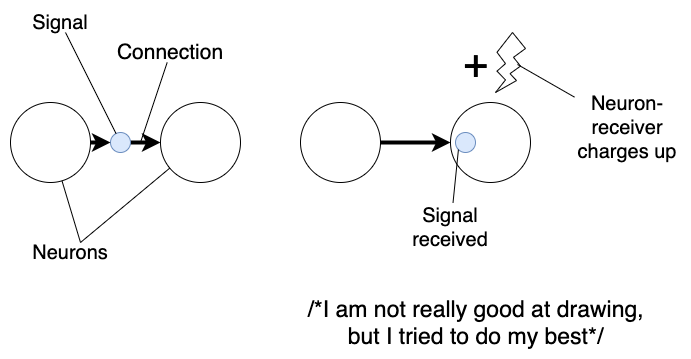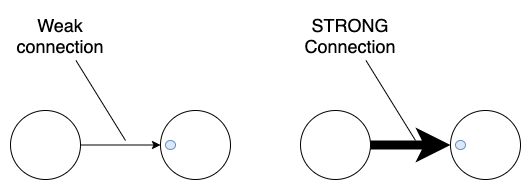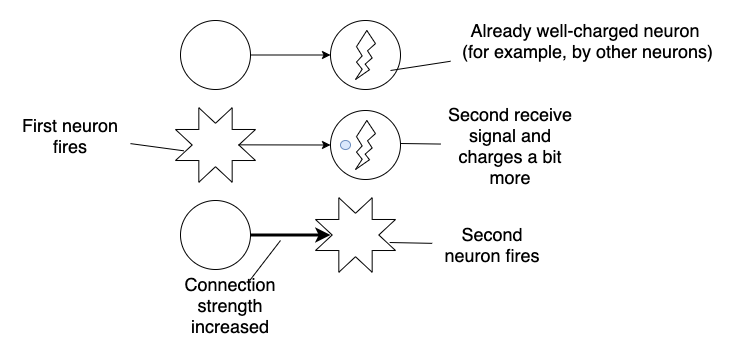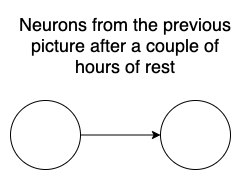Chapter 2: What's Inside?
post by ld97 · 2020-03-02T10:03:54.325Z · LW · GW · 0 commentsContents
No comments
I've been such a fool, thinking that memory would be the evident part. There were some memory models. But they were describing memory by duration, type of information, etc. That was exciting to read about experiments their authors made. Like "magic number 7", and Baddeley's experiments on different types of data like sound/visual. But there were a few problems:
- There was no one MODEL TO RULE THEM ALL. They were separately explaining different kinds of behavior.
- There was no way to connect any of them to my knowledge about neurons and all neuroscience-related stuff. In my opinion, they were full of: "And here happens some magic, and it does the trick."
I've decided to move on and try to connect all the facts I've learned with existing neuroscience.
Inside the brain, we have neurons. There are different types of them and several types of mediators. We don't care about them right now. We will use a simple model, where each neuron connects to others. While receiving input signals, it charges up.

Our goal is to store some data. And also retrieve that data.
It seems like retrieving data is related to neuron activation. When it's activated, it takes part in forming the model.
But what data is stored here? Let's see. Connections between neurons have different strengths. If it is weak, most probably, another neuron won't fire with ours. If it is strong, it will increase the probability of chain-reaction. So, we will keep the strength of our connections to other neurons as data. The questions of charging, leaking, threshold, we will leave behind the scene.

We defined our data as connections strengths. How to write this data?
There is one theory: Neurons that fire together, wire together. Then you coactivate two neurons - connection strength increases. That's called Hebb's rule. And with increasing strength, the probability that the second neuron will activate after activating first growing too.

But why do we tend to forget something?
After some period of inactivity, neurons that were connected by Hebb's rule start losing the connection power. If I understood it right, it could sustain for days, but not longer. For more information, and to check me, you can read about "Early Long-Term Potentiation" (E-LTP).

If we know that something Early exists, there should be something Late. I want to introduce to you: Late Long-Term Potentiation. It's responsible for maintaining your memories of "That superb delicious ice-cream falling into the river" when you were five and stuff like that. How does it work? It fixes states of connections "as-is" for a long time. Complicated thing, so we won't stay here for long. For more information, search for: "Epigenetics mechanisms in memory."
Let's quickly summarise what we have:
- Set of memory models that describe different behavior of people's memory.
- Neurons and connections between them represent data.
- E-LTP and L-LTP as sustaining connection mechanisms.
Let's try to pave the way between them. Memory models, like Working memory model or Atkinson-Shifrin Model, use the term Objects. The memory contains objects - that sounds intuitive, but "object" - is the human category. The way we use to describe something that we can separate from another. How will the representation of an "object" look in our model?
0 comments
Comments sorted by top scores.